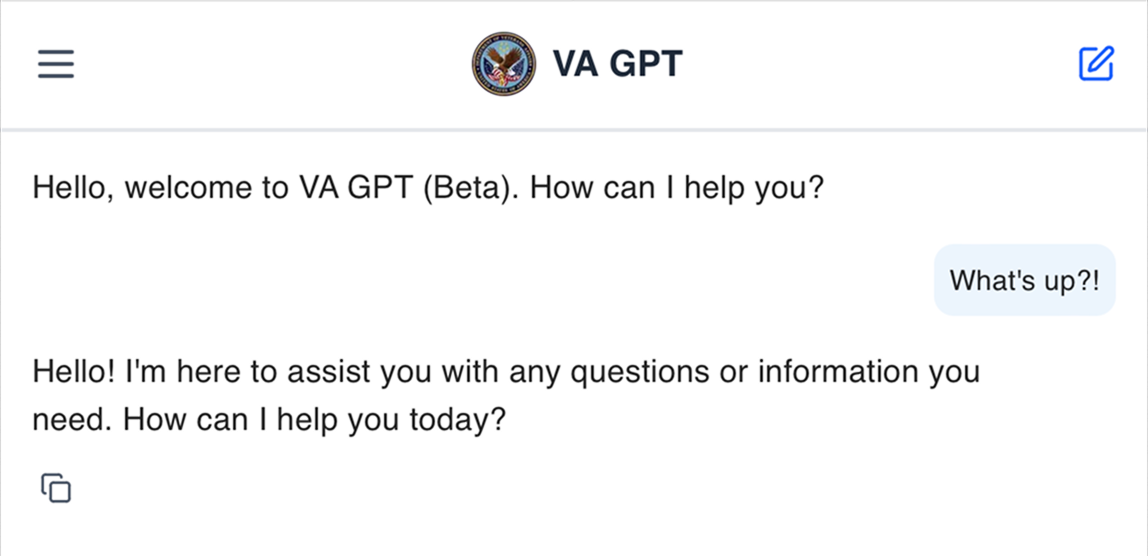Palantir Exposed: The New Deep State [27:27 | JUN 10 2025 | Glenn Greenwald]
-
Snowden exposed Palantir?
You Americans really need some heroes. Snowden might have done some good, but as soon as things got hot he folded like a cheap lawn chair and openly supported russian genocidal imperialism.
I hope Snowden and his family (his wife and kid) meet the same fate as they wish for Ukrainians in internment camps in the occupied territories.
He went to Russia because Obama wanted him dead. Obama targeted more whistleblowers exposing US crimes than any other president before him. The commander in chief of US genocidal imperialism.
-
You can fuck right off with your "pawn for the West", you tankie cockroach.
I live in Ukraine (I am originally from Donbas no less). Let's hope you end up in the Izolyatsia camp in occupied Donetsk oblast. You're word salad about "Ukraine being a pawn" isn't going to help you there. They are not going to care that you helped spread russian propaganda.
You don't speak Ukrainian, you've never lived in Ukraine and you have no clue what you are talking about.
You usually wear your fascism on your shoulder?
-
He went to Russia because Obama wanted him dead. Obama targeted more whistleblowers exposing US crimes than any other president before him. The commander in chief of US genocidal imperialism.
What does this have to do with anything I said?
There are millions of people who fight freedoms all around the world and don't back down when the going gets tough.
Snowden immediately started supporting russian genocidal imperialism. Look at his posts pre full scale invasion in Jan and Feb 2022. Complete alignment with russian propaganda about how they are not going to invade.
Hope Snowden and his family (wife and child) get to experience what they wish for Ukrainians in russian internment camps in the occupied territories.
-
You usually wear your fascism on your shoulder?
Right, opposing russian genocidal imperialism and their invasion of my country is fascism.
You tankie roaches are all the same.
-
Right, opposing russian genocidal imperialism and their invasion of my country is fascism.
You tankie roaches are all the same.
If the US had stayed out of everyone's business Russia wouldn't be banging on your back door. Putin is only in power BECAUSE of US interference in Russia.
-
What does this have to do with anything I said?
There are millions of people who fight freedoms all around the world and don't back down when the going gets tough.
Snowden immediately started supporting russian genocidal imperialism. Look at his posts pre full scale invasion in Jan and Feb 2022. Complete alignment with russian propaganda about how they are not going to invade.
Hope Snowden and his family (wife and child) get to experience what they wish for Ukrainians in russian internment camps in the occupied territories.
Maybe your focus should be on fixing your own house before trying to fix others. Get rid of your governments corruption and their Nazis.
-
Maybe your focus should be on fixing your own house before trying to fix others. Get rid of your governments corruption and their Nazis.
Bugger off with your lies about "muh nazis in Ukraine" you tankie roach.
You don't speak Ukrainian, you've never lived here. You have no clue what you're talking about.
You're just lying for some internet roleplay bullshit. Let's hope you and your family members will one day be on the receiving end of russian genocidal imperialism.
It will be a good lesson for a disgusting degenerate like you.
-
If the US had stayed out of everyone's business Russia wouldn't be banging on your back door. Putin is only in power BECAUSE of US interference in Russia.
No, putin is in power because the vast majority of russians are genocidal imperialists. They had an opportunity to build something better for their children after the somewhat peaceful end of the USSR, instead they chose genocidal imperialism and authoritarianism.
You've never lived in russia, you don't speak russian. You're just a random internet fake leftist degenerate.
You don't understand anything about what is going in Ukraine.
-
Bugger off with your lies about "muh nazis in Ukraine" you tankie roach.
You don't speak Ukrainian, you've never lived here. You have no clue what you're talking about.
You're just lying for some internet roleplay bullshit. Let's hope you and your family members will one day be on the receiving end of russian genocidal imperialism.
It will be a good lesson for a disgusting degenerate like you.
There isn't a single media source or country in the world that didn't acknowledge Ukraine's corruption and Nazi problem prior to the start of the US proxy war. Even the US State Department acknowledged it.
NATO Secretary General Jens Stoltenberg denied Ukrainian NATO membership due to levels of corruption.
A person doesn't need to live somewhere to know lies from truth.
-
No, putin is in power because the vast majority of russians are genocidal imperialists. They had an opportunity to build something better for their children after the somewhat peaceful end of the USSR, instead they chose genocidal imperialism and authoritarianism.
You've never lived in russia, you don't speak russian. You're just a random internet fake leftist degenerate.
You don't understand anything about what is going in Ukraine.
Putin is in power because the US interfered in Russian elections under Clinton that ensured Yeltsin won. Yeltsin appointed Putin to be his successor.
-
Putin is in power because the US interfered in Russian elections under Clinton that ensured Yeltsin won. Yeltsin appointed Putin to be his successor.
Fuck off. You have no proof for this. You're just parroting random copytext.
I lived in russia during the 1996 election (and I speak russian unlike you).
You're lying and parroting russian revanchist victimhood narrative propaganda blaming scapegoats for the actions of the russians.
-
There isn't a single media source or country in the world that didn't acknowledge Ukraine's corruption and Nazi problem prior to the start of the US proxy war. Even the US State Department acknowledged it.
NATO Secretary General Jens Stoltenberg denied Ukrainian NATO membership due to levels of corruption.
A person doesn't need to live somewhere to know lies from truth.
Nazi "problem" is made up bullshit spread by tankie roaches like you. Most developed world countries have far higher support for far right parties in their lower (and upper) houses than Ukraine.
It's a key element of russian propaganda and their "justification" for invading Ukraine. Which you are parroting.
Unlike you I've lived in both in Ukraine and russia for ~10+ years and I speak both russian and Ukrainian.
You are liar. You have no idea what you are talking about. You are just repeating russian propaganda because at this stage in your life you decided to get involved with an internet roleplay thing.
We both know this is true. You won't admit this publicly, but we both know it.
-
Fuck off. You have no proof for this. You're just parroting random copytext.
I lived in russia during the 1996 election (and I speak russian unlike you).
You're lying and parroting russian revanchist victimhood narrative propaganda blaming scapegoats for the actions of the russians.
 is Time Magazine also random copy text?
is Time Magazine also random copy text? -
Nazi "problem" is made up bullshit spread by tankie roaches like you. Most developed world countries have far higher support for far right parties in their lower (and upper) houses than Ukraine.
It's a key element of russian propaganda and their "justification" for invading Ukraine. Which you are parroting.
Unlike you I've lived in both in Ukraine and russia for ~10+ years and I speak both russian and Ukrainian.
You are liar. You have no idea what you are talking about. You are just repeating russian propaganda because at this stage in your life you decided to get involved with an internet roleplay thing.
We both know this is true. You won't admit this publicly, but we both know it.
I'm sure its my propaganda that named major streets in Ukraine after Ukrainian Nazis, have statues scattered all over the country celebrating Nazis.
Your claims of 'i speak Russian in Ukraine' bullshit holds no water.
-
 is Time Magazine also random copy text?
is Time Magazine also random copy text?Did you read the article?
Can you explain the arguments without a web search?
Of course not, because you are just reciting online roleplay bullshit.
Give me something that would shows you're not just a random degenerate lying about things you don't understand.
This shouldn't be difficult.
Don't even bother aggressively googling for random shit. I will of course see through it because ... wait for it ... I lived in Russia during the 1996 election and I speak russian.
-
I'm sure its my propaganda that named major streets in Ukraine after Ukrainian Nazis, have statues scattered all over the country celebrating Nazis.
Your claims of 'i speak Russian in Ukraine' bullshit holds no water.
It's your propaganda that denies that Russia cooperated with Nazis through 1939 to 1941 to invade and split up Europe.
Yes Ukrainian nationalists did bad things during WW2. That being said Nazis and russians are equally bad. The russians organized a genocide of Ukrainians that killed millions.
You are reciting russian propaganda because you support russian genocidal imperialism.
You can stick that water up your ass for an enema.
We both know you are a disgusting degenerate that has no clue about Ukraine and russia.
-
Did you read the article?
Can you explain the arguments without a web search?
Of course not, because you are just reciting online roleplay bullshit.
Give me something that would shows you're not just a random degenerate lying about things you don't understand.
This shouldn't be difficult.
Don't even bother aggressively googling for random shit. I will of course see through it because ... wait for it ... I lived in Russia during the 1996 election and I speak russian.
You seem to be an unhinged fragile snowflake
-
You seem to be an unhinged fragile snowflake
As you say my tankie cockroach.
-
Ukraine, like many other countries, is being used as a pawn for the Western regime's agenda.
It seems like Western pro-war people are okay with continuing this war until the last Ukrainian is kidnapped and sent to the front lines so that the oligarchs can gain more natural resources and military contracts.
Propaganda really works on most Western people; Russiagate and Russiophobia are still seen as serious issues...
Even after we learned (Snowden leaks) that our governments lie to us so they can maximize their for-profit forever wars in the Middle East, now they are attempting to antagonize Iran and China.
jimmy dore lmao. imagine getting your politics from a shitty youtube "comedian".
-
jimmy dore lmao. imagine getting your politics from a shitty youtube "comedian".
I see him as a comedian with populist opinions and rants.
Feel free to post critical videos on the JD community; all are welcome.
Don't forget to have higher standards for politicians than for comedians.
The politicians (lackeys of oligarchs) are the ones with real power and influence to change our society for better or mostly for the worst.
All is well, peace.





